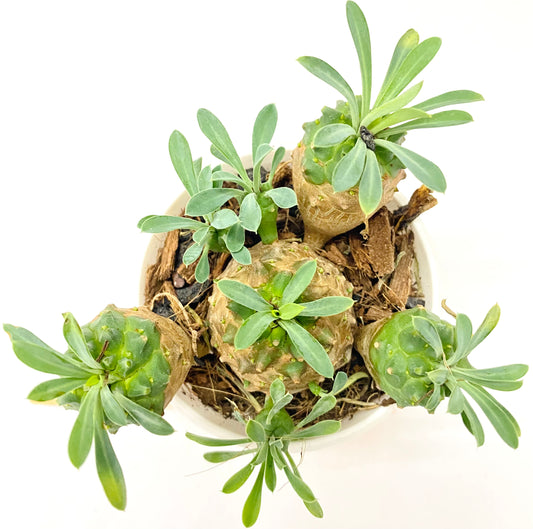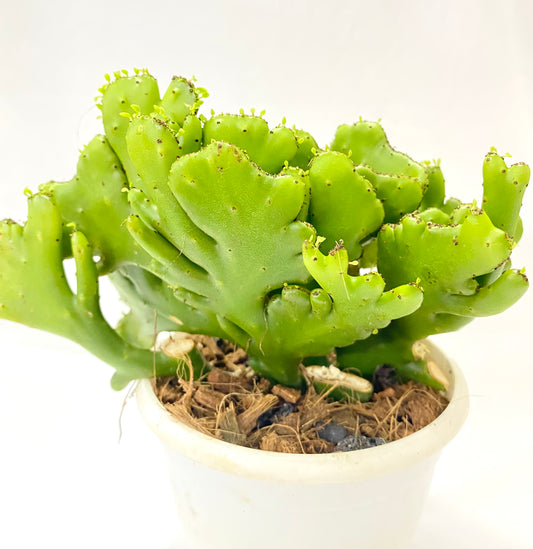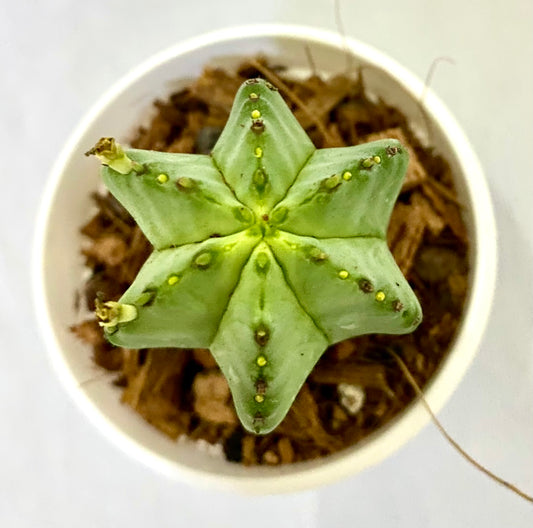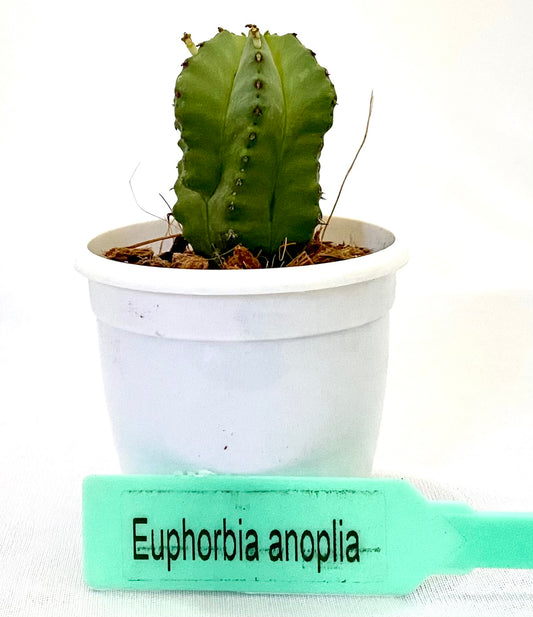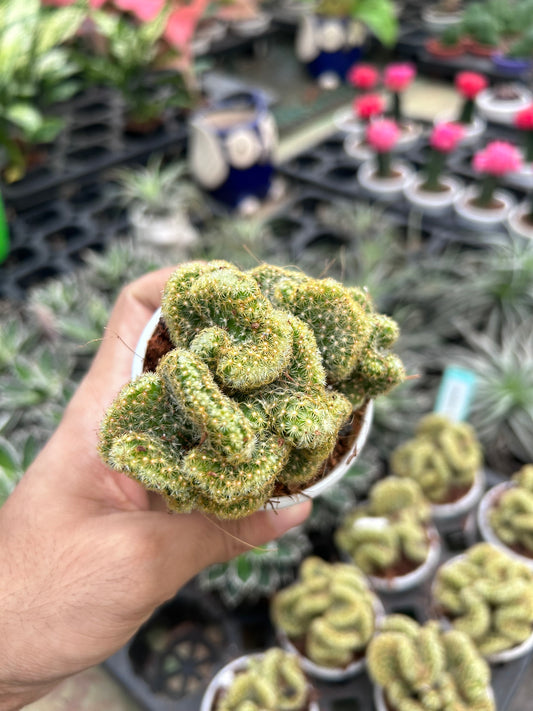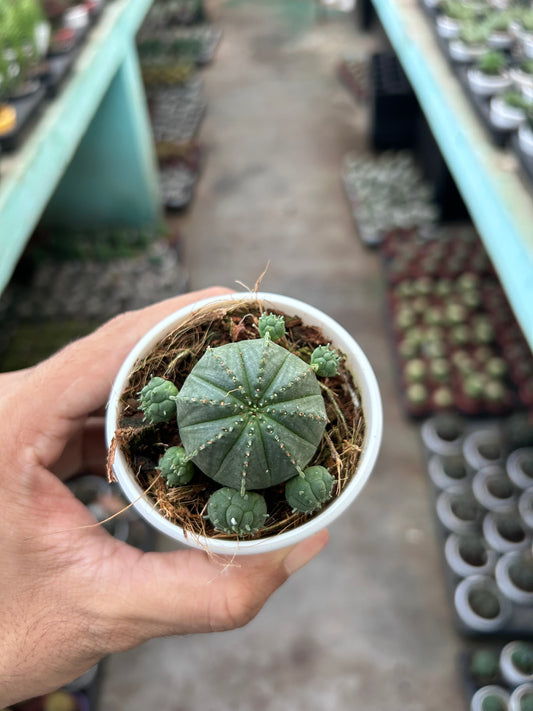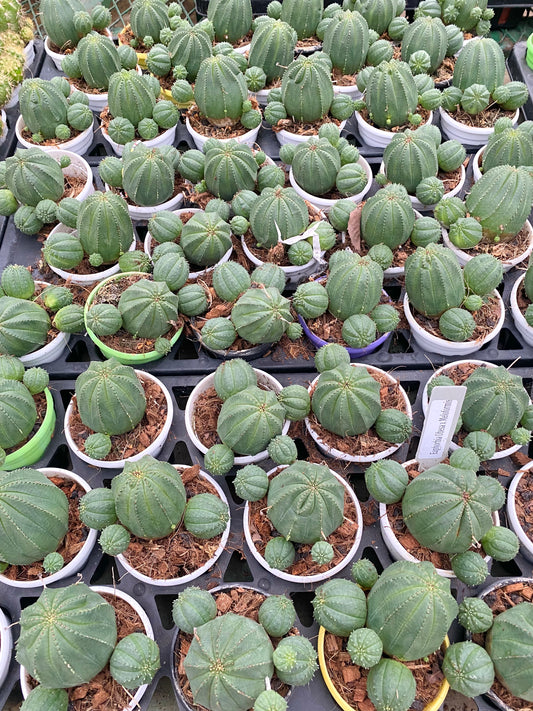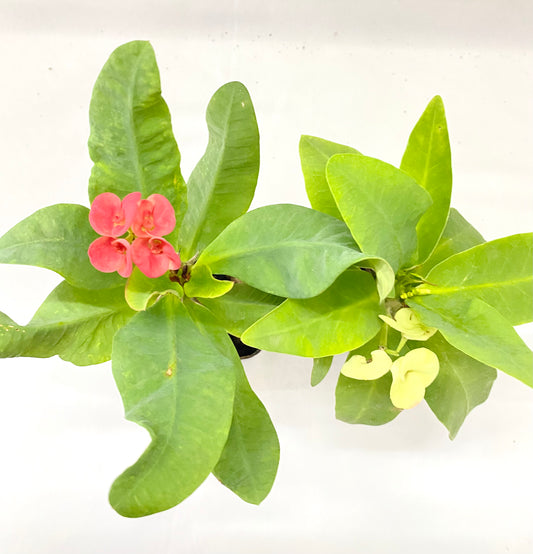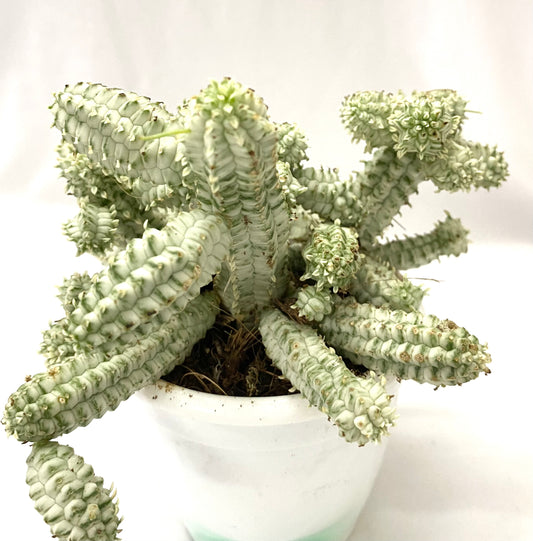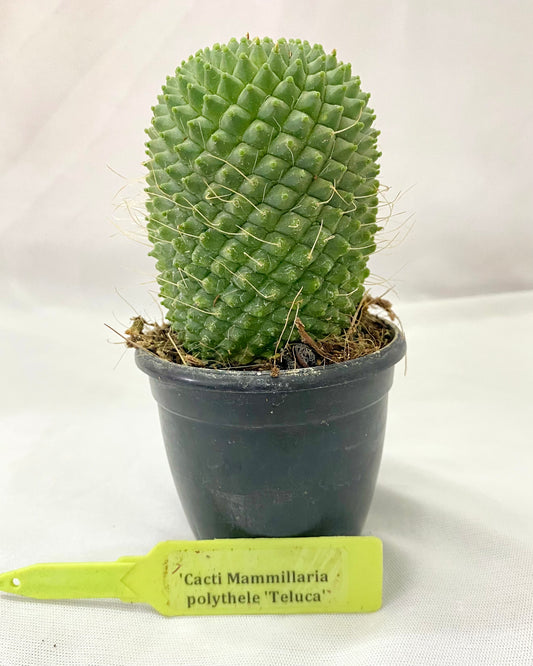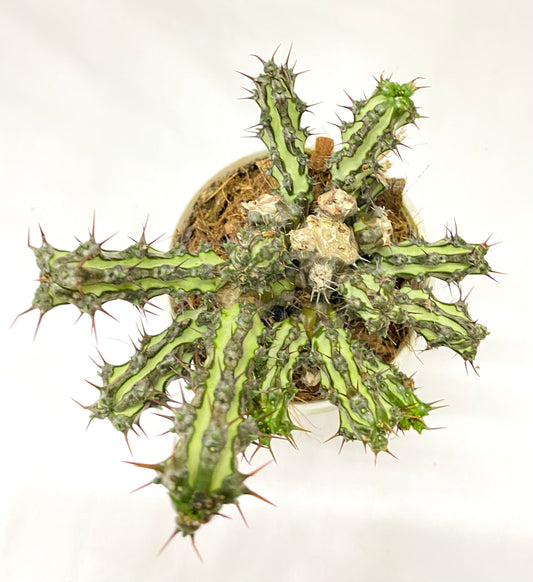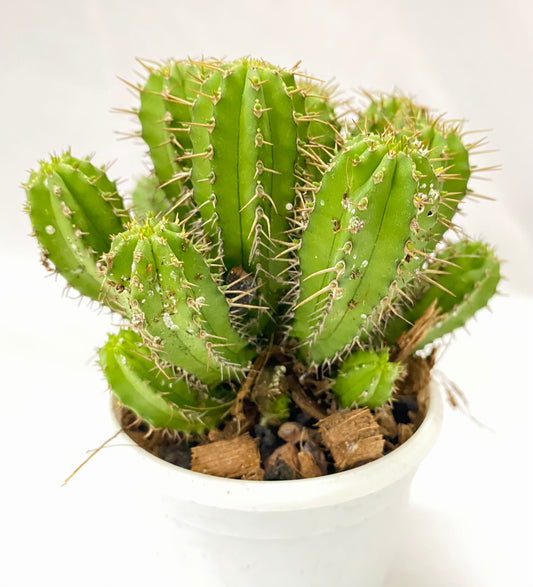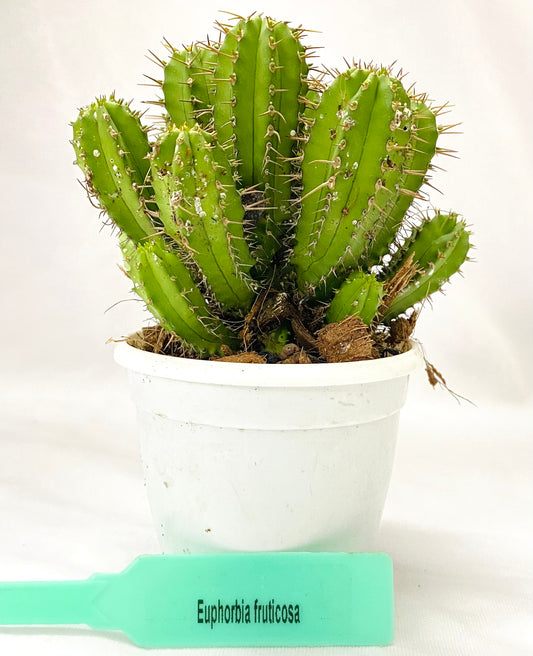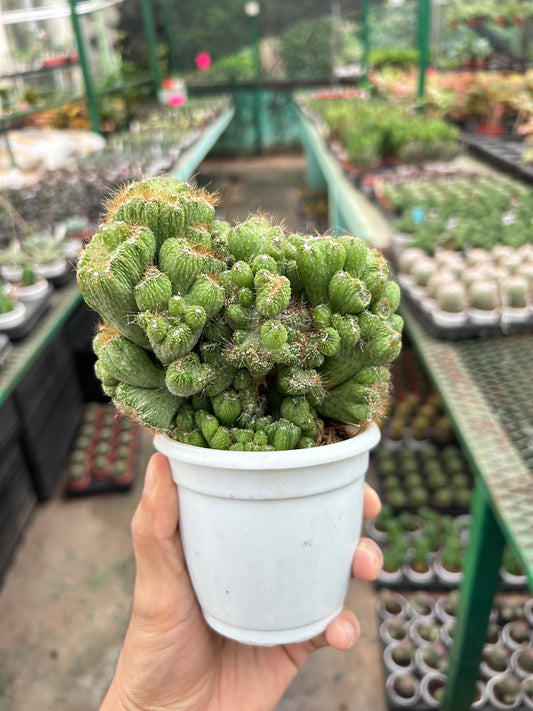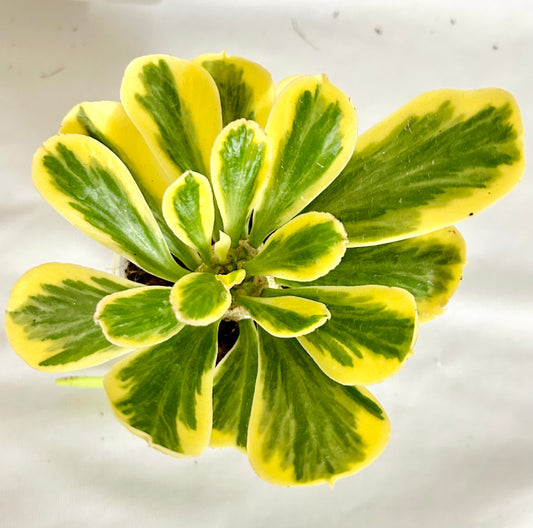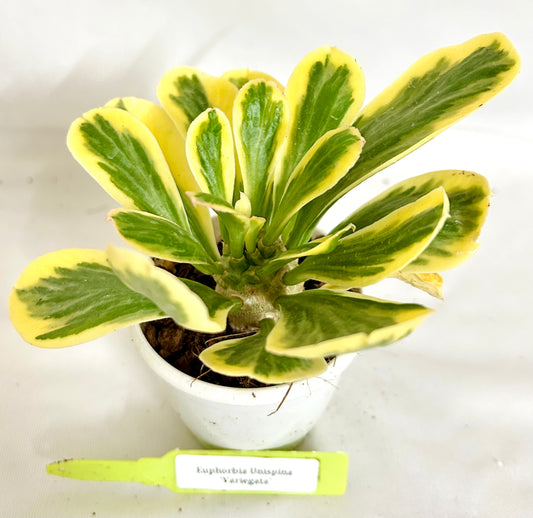Collection: Euphorbia
Euphorbia is a diverse and extensive genus of flowering plants, commonly known as spurge. This genus encompasses a wide variety of species, many of which are succulent and adapted to arid or semi-arid environments. Here are some key features of Euphorbia:
1. **Succulent Varieties:** Euphorbia includes a wide range of succulent plants with fleshy stems, leaves, or modified structures for water storage. Some well-known succulent Euphorbia species include Euphorbia tirucalli (pencil cactus) and Euphorbia milii (crown of thorns).
2. **Diversity:** The genus Euphorbia is incredibly diverse, with over 2,000 species, including both succulent and non-succulent varieties. They can vary greatly in size, shape, and growth habit.
3. **Milky Sap:** Many Euphorbia species produce a milky, latex-like sap that can be toxic and irritating to the skin. Handling with care is recommended, and it's essential to avoid contact with eyes or mucous membranes.
4. **Flowers:** Euphorbia plants produce unique and often inconspicuous flowers, which are surrounded by colorful bracts (modified leaves). These bracts can be striking and give the plant ornamental value.
5. **Cultivation:** Succulent Euphorbia species are popular in the world of succulent and cactus collectors. They are relatively low-maintenance and can thrive in well-drained soil and sunny conditions. Proper care varies depending on the specific species.
6. **Toxicity:** As mentioned earlier, the milky sap of many Euphorbia species is toxic and should not be ingested. It's also important to keep them away from pets and children.
Euphorbia plants are appreciated for their unique appearance and adaptability to different growing conditions. Whether as part of a succulent garden, a houseplant, or a landscape plant, they can make a distinctive addition to your collection.

-
Euphorbia japonica
Regular price Rs. 349.00Regular priceUnit price / perRs. 0.00Sale price Rs. 349.00 -
Euphorbia leucodendron cristata
Regular price Rs. 399.00Regular priceUnit price / per -
Euphorbia Anoplia
Regular price Rs. 249.00Regular priceUnit price / perRs. 0.00Sale price Rs. 249.00 -
Mammillaria Elongata f. Cristata (Brain Cactus)
5.0 / 5.0
(1) 1 total reviews
Regular price Rs. 399.00Regular priceUnit price / perRs. 0.00Sale price Rs. 399.00 -
Euphorbia Obese Melaformis
Regular price Rs. 249.00Regular priceUnit price / perRs. 0.00Sale price Rs. 249.00 -
Euphorbia milli Hybrids
Regular price Rs. 149.00Regular priceUnit price / perRs. 0.00Sale price Rs. 149.00 -
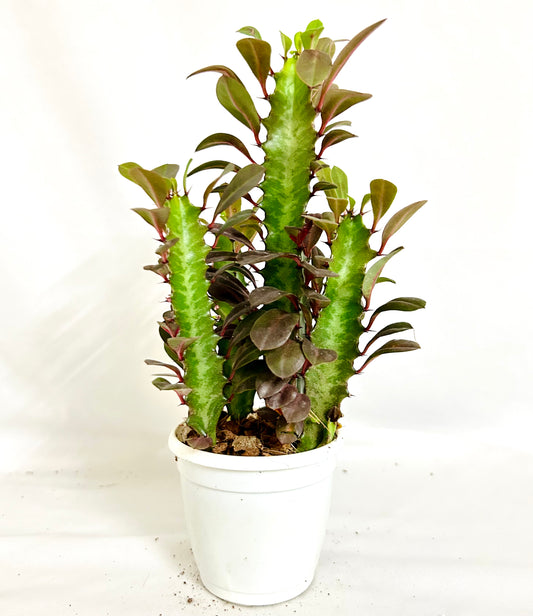
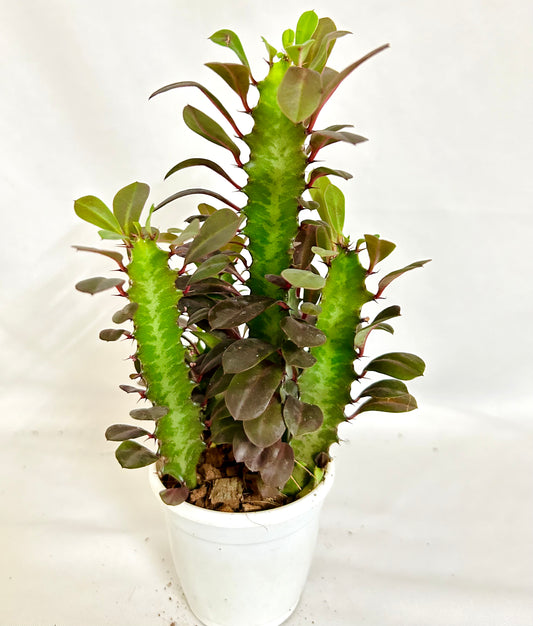 Sale
SaleEuphorbia Trigona
Regular price Rs. 249.00Regular priceUnit price / perRs. 299.00Sale price Rs. 249.00Sale -
Echinopsis 'Subdenudata'
Regular price Rs. 349.00Regular priceUnit price / perRs. 0.00Sale price Rs. 349.00 -
Euphorbia Mamalaris Variagated
Regular price Rs. 349.00Regular priceUnit price / perRs. 0.00Sale price Rs. 349.00 -
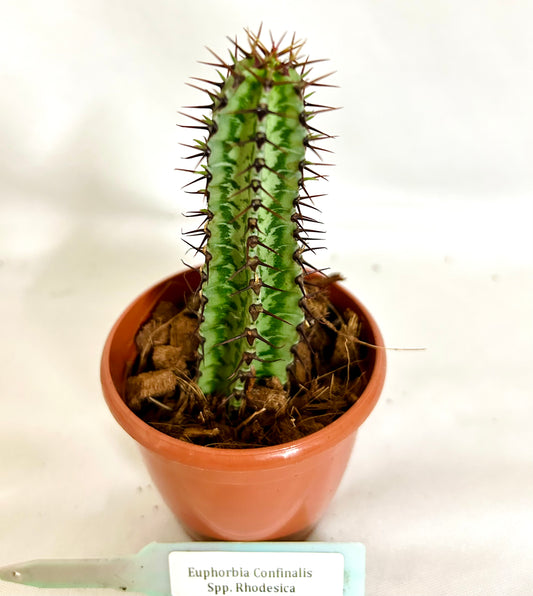
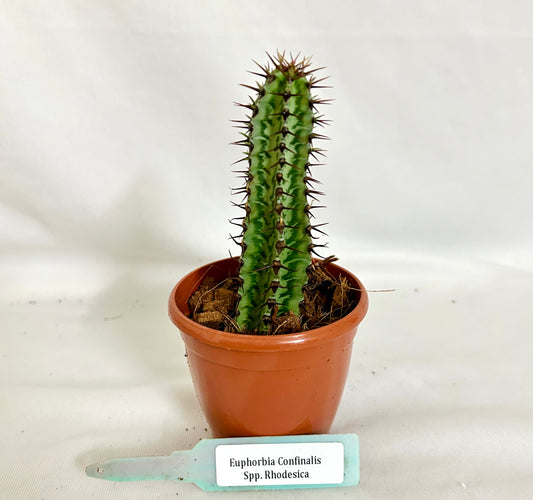 Sold out
Sold outEuphorbia Confinalis Spp. Rhodesica
Regular price Rs. 349.00Regular priceUnit price / perRs. 599.00Sale price Rs. 349.00Sold out -
Mammillaria Polythele Toluca
Regular price Rs. 349.00Regular priceUnit price / perRs. 0.00Sale price Rs. 349.00 -
Euphorbia Mamalaris Corncob Variagated
Regular price Rs. 249.00Regular priceUnit price / perRs. 0.00Sale price Rs. 249.00 -
Euphorbia Spp Nova
Regular price Rs. 249.00Regular priceUnit price / per -
Euphorbia Fruticosa
Regular price Rs. 249.00Regular priceUnit price / perRs. 0.00Sale price Rs. 249.00 -
Cereus repandus 'Petra' Cristate (Large Size)
Regular price Rs. 449.00Regular priceUnit price / perRs. 0.00Sale price Rs. 449.00 -
Euphorbia Unispina Variegata
Regular price Rs. 249.00Regular priceUnit price / perRs. 299.00Sale price Rs. 249.00Sale

